CHEMICAL IDENTIFICATION
-
RTECS NUMBER :
-
CM3675000
-
CHEMICAL NAME :
-
2H-Azepin-2-one, hexahydro-
-
CAS REGISTRY NUMBER :
-
105-60-2
-
BEILSTEIN REFERENCE NO. :
-
0106934
-
LAST UPDATED :
-
199806
-
DATA ITEMS CITED :
-
91
-
MOLECULAR FORMULA :
-
C6-H11-N-O
-
MOLECULAR WEIGHT :
-
113.18
-
WISWESSER LINE NOTATION :
-
T7MVTJ
HEALTH HAZARD DATA
ACUTE TOXICITY DATA
-
TYPE OF TEST :
-
Standard Draize test
-
ROUTE OF EXPOSURE :
-
Administration onto the skin
-
SPECIES OBSERVED :
-
Rodent - rabbit
-
TYPE OF TEST :
-
Standard Draize test
-
ROUTE OF EXPOSURE :
-
Administration into the eye
-
SPECIES OBSERVED :
-
Rodent - rabbit
-
TYPE OF TEST :
-
TCLo - Lowest published toxic concentration
-
ROUTE OF EXPOSURE :
-
Inhalation
-
SPECIES OBSERVED :
-
Human
-
DOSE/DURATION :
-
100 ppm
-
TOXIC EFFECTS :
-
Lungs, Thorax, or Respiration - cough
-
TYPE OF TEST :
-
LD50 - Lethal dose, 50 percent kill
-
ROUTE OF EXPOSURE :
-
Oral
-
SPECIES OBSERVED :
-
Rodent - rat
-
DOSE/DURATION :
-
1210 mg/kg
-
TOXIC EFFECTS :
-
Sense Organs and Special Senses (Eye) - chromodacryorrhea Behavioral - convulsions or effect on seizure threshold Nutritional and Gross Metabolic - body temperature decrease
-
TYPE OF TEST :
-
LC50 - Lethal concentration, 50 percent kill
-
ROUTE OF EXPOSURE :
-
Inhalation
-
SPECIES OBSERVED :
-
Rodent - rat
-
DOSE/DURATION :
-
300 mg/m3/2H
-
TOXIC EFFECTS :
-
Details of toxic effects not reported other than lethal dose value
-
TYPE OF TEST :
-
LDLo - Lowest published lethal dose
-
ROUTE OF EXPOSURE :
-
Intraperitoneal
-
SPECIES OBSERVED :
-
Rodent - rat
-
DOSE/DURATION :
-
800 mg/kg
-
TOXIC EFFECTS :
-
Behavioral - convulsions or effect on seizure threshold Gastrointestinal - changes in structure or function of salivary glands Nutritional and Gross Metabolic - body temperature decrease
-
TYPE OF TEST :
-
LD50 - Lethal dose, 50 percent kill
-
ROUTE OF EXPOSURE :
-
Unreported
-
SPECIES OBSERVED :
-
Rodent - rat
-
DOSE/DURATION :
-
580 mg/kg
-
TOXIC EFFECTS :
-
Behavioral - convulsions or effect on seizure threshold Kidney, Ureter, Bladder - urine volume increased
-
TYPE OF TEST :
-
LD50 - Lethal dose, 50 percent kill
-
ROUTE OF EXPOSURE :
-
Oral
-
SPECIES OBSERVED :
-
Rodent - mouse
-
DOSE/DURATION :
-
930 mg/kg
-
TOXIC EFFECTS :
-
Behavioral - muscle contraction or spasticity Lungs, Thorax, or Respiration - dyspnea
-
TYPE OF TEST :
-
LC50 - Lethal concentration, 50 percent kill
-
ROUTE OF EXPOSURE :
-
Inhalation
-
SPECIES OBSERVED :
-
Rodent - mouse
-
DOSE/DURATION :
-
450 mg/m3
-
TOXIC EFFECTS :
-
Behavioral - muscle contraction or spasticity
-
TYPE OF TEST :
-
LD50 - Lethal dose, 50 percent kill
-
ROUTE OF EXPOSURE :
-
Intraperitoneal
-
SPECIES OBSERVED :
-
Rodent - mouse
-
DOSE/DURATION :
-
650 mg/kg
-
TOXIC EFFECTS :
-
Behavioral - convulsions or effect on seizure threshold Behavioral - antipsychotic Behavioral - analgesia
-
TYPE OF TEST :
-
LD50 - Lethal dose, 50 percent kill
-
ROUTE OF EXPOSURE :
-
Subcutaneous
-
SPECIES OBSERVED :
-
Rodent - mouse
-
DOSE/DURATION :
-
750 mg/kg
-
TOXIC EFFECTS :
-
Details of toxic effects not reported other than lethal dose value
-
TYPE OF TEST :
-
LD50 - Lethal dose, 50 percent kill
-
ROUTE OF EXPOSURE :
-
Intravenous
-
SPECIES OBSERVED :
-
Rodent - mouse
-
DOSE/DURATION :
-
480 mg/kg
-
TOXIC EFFECTS :
-
Details of toxic effects not reported other than lethal dose value
-
TYPE OF TEST :
-
LD50 - Lethal dose, 50 percent kill
-
ROUTE OF EXPOSURE :
-
Unreported
-
SPECIES OBSERVED :
-
Rodent - mouse
-
DOSE/DURATION :
-
930 mg/kg
-
TOXIC EFFECTS :
-
Behavioral - convulsions or effect on seizure threshold Kidney, Ureter, Bladder - urine volume increased
-
TYPE OF TEST :
-
LD50 - Lethal dose, 50 percent kill
-
ROUTE OF EXPOSURE :
-
Administration onto the skin
-
SPECIES OBSERVED :
-
Rodent - rabbit
-
DOSE/DURATION :
-
1410 uL/kg
-
TOXIC EFFECTS :
-
Details of toxic effects not reported other than lethal dose value
-
TYPE OF TEST :
-
LD - Lethal dose
-
ROUTE OF EXPOSURE :
-
Intravenous
-
SPECIES OBSERVED :
-
Rodent - rabbit
-
DOSE/DURATION :
-
>300 mg/kg
-
TOXIC EFFECTS :
-
Behavioral - convulsions or effect on seizure threshold Gastrointestinal - changes in structure or function of salivary glands Nutritional and Gross Metabolic - body temperature decrease
-
TYPE OF TEST :
-
LD50 - Lethal dose, 50 percent kill
-
ROUTE OF EXPOSURE :
-
Unreported
-
SPECIES OBSERVED :
-
Rodent - rabbit
-
DOSE/DURATION :
-
1 gm/kg
-
TOXIC EFFECTS :
-
Behavioral - convulsions or effect on seizure threshold Kidney, Ureter, Bladder - urine volume increased
-
TYPE OF TEST :
-
LDLo - Lowest published lethal dose
-
ROUTE OF EXPOSURE :
-
Subcutaneous
-
SPECIES OBSERVED :
-
Rodent - guinea pig
-
DOSE/DURATION :
-
950 mg/kg
-
TOXIC EFFECTS :
-
Details of toxic effects not reported other than lethal dose value
-
TYPE OF TEST :
-
LDLo - Lowest published lethal dose
-
ROUTE OF EXPOSURE :
-
Subcutaneous
-
SPECIES OBSERVED :
-
Amphibian - frog
-
DOSE/DURATION :
-
2800 mg/kg
-
TOXIC EFFECTS :
-
Autonomic Nervous System - other (direct) parasympathomimetic Behavioral - somnolence (general depressed activity) Behavioral - convulsions or effect on seizure threshold
-
TYPE OF TEST :
-
TDLo - Lowest published toxic dose
-
ROUTE OF EXPOSURE :
-
Oral
-
SPECIES OBSERVED :
-
Rodent - rat
-
DOSE/DURATION :
-
42 gm/kg/8W-C
-
TOXIC EFFECTS :
-
Nutritional and Gross Metabolic - weight loss or decreased weight gain
-
TYPE OF TEST :
-
TDLo - Lowest published toxic dose
-
ROUTE OF EXPOSURE :
-
Oral
-
SPECIES OBSERVED :
-
Rodent - rat
-
DOSE/DURATION :
-
540 mg/kg/90-C
-
TOXIC EFFECTS :
-
Kidney, Ureter, Bladder - changes in tubules (including acute renal failure, acute tubular necrosis) Blood - changes in serum composition (e.g. TP, bilirubin, cholesterol) Nutritional and Gross Metabolic - changes in sodium
-
TYPE OF TEST :
-
TCLo - Lowest published toxic concentration
-
ROUTE OF EXPOSURE :
-
Inhalation
-
SPECIES OBSERVED :
-
Rodent - rat
-
DOSE/DURATION :
-
5960 mg/kg/82D-C
-
TOXIC EFFECTS :
-
Kidney, Ureter, Bladder - other changes in urine composition Biochemical - Enzyme inhibition, induction, or change in blood or tissue levels - true cholinesterase
-
TYPE OF TEST :
-
TDLo - Lowest published toxic dose
-
ROUTE OF EXPOSURE :
-
Intraperitoneal
-
SPECIES OBSERVED :
-
Rodent - rat
-
DOSE/DURATION :
-
9100 mg/kg/26W-I
-
TOXIC EFFECTS :
-
Blood - changes in serum composition (e.g. TP, bilirubin, cholesterol) Blood - changes in other cell count (unspecified) Related to Chronic Data - death
-
TYPE OF TEST :
-
TDLo - Lowest published toxic dose
-
ROUTE OF EXPOSURE :
-
Oral
-
DOSE :
-
10 gm/kg
-
SEX/DURATION :
-
female 6-15 day(s) after conception
-
TOXIC EFFECTS :
-
Reproductive - Fertility - post-implantation mortality (e.g. dead and/or resorbed implants per total number of implants)
-
TYPE OF TEST :
-
TDLo - Lowest published toxic dose
-
ROUTE OF EXPOSURE :
-
Oral
-
DOSE :
-
10 gm/kg
-
SEX/DURATION :
-
female 6-15 day(s) after conception
-
TOXIC EFFECTS :
-
Reproductive - Effects on Newborn - growth statistics (e.g.%, reduced weight gain)
-
TYPE OF TEST :
-
TCLo - Lowest published toxic concentration
-
ROUTE OF EXPOSURE :
-
Inhalation
-
DOSE :
-
125 mg/m3/24H
-
SEX/DURATION :
-
male 76 day(s) pre-mating
-
TOXIC EFFECTS :
-
Reproductive - Paternal Effects - spermatogenesis (incl. genetic material, sperm morphology, motility, and count)
-
TYPE OF TEST :
-
TDLo - Lowest published toxic dose
-
ROUTE OF EXPOSURE :
-
Inhalation
-
DOSE :
-
473 mg/m3/4H
-
SEX/DURATION :
-
female 1-5 day(s) after conception
-
TOXIC EFFECTS :
-
Reproductive - Fertility - pre-implantation mortality (e.g. reduction in number of implants per female; total number of implants per corpora lutea) Reproductive - Effects on Embryo or Fetus - fetal death
-
TYPE OF TEST :
-
TDLo - Lowest published toxic dose
-
ROUTE OF EXPOSURE :
-
Inhalation
-
DOSE :
-
139 mg/m3/4H
-
SEX/DURATION :
-
female 6-12 day(s) after conception
-
TOXIC EFFECTS :
-
Reproductive - Fertility - pre-implantation mortality (e.g. reduction in number of implants per female; total number of implants per corpora lutea)
-
TYPE OF TEST :
-
TCLo - Lowest published toxic concentration
-
ROUTE OF EXPOSURE :
-
Inhalation
-
DOSE :
-
473 mg/m3/4H
-
SEX/DURATION :
-
female 60 day(s) pre-mating
-
TOXIC EFFECTS :
-
Reproductive - Maternal Effects - menstrual cycle changes or disorders
-
TYPE OF TEST :
-
TDLo - Lowest published toxic dose
-
ROUTE OF EXPOSURE :
-
Oral
-
DOSE :
-
3450 mg/kg
-
SEX/DURATION :
-
female 6-28 day(s) after conception
-
TOXIC EFFECTS :
-
Reproductive - Effects on Embryo or Fetus - fetotoxicity (except death, e.g., stunted fetus)
-
TYPE OF TEST :
-
TDLo - Lowest published toxic dose
-
ROUTE OF EXPOSURE :
-
Oral
-
DOSE :
-
2500 mg/kg
-
SEX/DURATION :
-
female 6-15 day(s) after conception
-
TOXIC EFFECTS :
-
Reproductive - Effects on Newborn - growth statistics (e.g.%, reduced weight gain)
-
TYPE OF TEST :
-
Specific locus test
-
TYPE OF TEST :
-
Sex chromosome loss and nondisjunction
-
TYPE OF TEST :
-
Micronucleus test
-
TYPE OF TEST :
-
DNA damage
-
TYPE OF TEST :
-
Sperm Morphology
-
TYPE OF TEST :
-
Specific locus test
-
TYPE OF TEST :
-
DNA damage
MUTATION DATA
-
TYPE OF TEST :
-
Sister chromatid exchange
-
TEST SYSTEM :
-
Rodent - hamster Ovary
-
REFERENCE :
-
MUREAV Mutation Research. (Elsevier Science Pub. B.V., POB 211, 1000 AE Amsterdam, Netherlands) V.1- 1964- Volume(issue)/page/year: 224,333,1989 *** REVIEWS *** ACGIH TLV-Not classifiable as a human carcinogen DTLVS* The Threshold Limit Values (TLVs) and Biological Exposure Indices (BEIs) booklet issues by American Conference of Governmental Industrial Hygienists (ACGIH), Cincinnati, OH, 1996 Volume(issue)/page/year: TLV/BEI,1997 ACGIH TLV-TWA 23 mg/m3 (5 ppm) (vapor) DTLVS* The Threshold Limit Values (TLVs) and Biological Exposure Indices (BEIs) booklet issues by American Conference of Governmental Industrial Hygienists (ACGIH), Cincinnati, OH, 1996 Volume(issue)/page/year: TLV/BEI,1997 ACGIH TLV-STEL 46 mg/m3 (10 ppm) (vapor) DTLVS* The Threshold Limit Values (TLVs) and Biological Exposure Indices (BEIs) booklet issues by American Conference of Governmental Industrial Hygienists (ACGIH), Cincinnati, OH, 1996 Volume(issue)/page/year: TLV/BEI,1997 ACGIH TLV-STEL 3 mg/m3 (dust) DTLVS* The Threshold Limit Values (TLVs) and Biological Exposure Indices (BEIs) booklet issues by American Conference of Governmental Industrial Hygienists (ACGIH), Cincinnati, OH, 1996 Volume(issue)/page/year: TLV/BEI,1997 ACGIH TLV-TWA 1 mg/m3 (dust) DTLVS* The Threshold Limit Values (TLVs) and Biological Exposure Indices (BEIs) booklet issues by American Conference of Governmental Industrial Hygienists (ACGIH), Cincinnati, OH, 1996 Volume(issue)/page/year: TLV/BEI,1997 IARC Cancer Review:Animal NO EVIDENCE IMEMDT IARC Monographs on the Evaluation of Carcinogenic Risk of Chemicals to Man. (WHO Publications Centre USA, 49 Sheridan Ave., Albany, NY 12210) V.1- 1972- Volume(issue)/page/year: 39,247,1986 IARC Cancer Review:Human No Adequate Data IMEMDT IARC Monographs on the Evaluation of Carcinogenic Risk of Chemicals to Man. (WHO Publications Centre USA, 49 Sheridan Ave., Albany, NY 12210) V.1- 1972- Volume(issue)/page/year: 39,247,1986 IARC Cancer Review:Group 4 IMSUDL IARC Monographs, Supplement. (WHO Publications Centre USA, 49 Sheridan Ave., Albany, NY 12210) No.1- 1979- Volume(issue)/page/year: 7,56,1987 *** OCCUPATIONAL EXPOSURE LIMITS *** OEL-AUSTRALIA:TWA 1 mg/m3;STEL 3 mg/m3 (dust) JAN 1993 OEL-AUSTRALIA:TWA 5 ppm (20 mg/m3);STEL 10 ppm (vapor) JAN 1993 OEL-AUSTRIA:TWA 25 mg/m3 (dust) JAN 1993 OEL-BELGIUM:TWA 1 mg/m3;STEL 3 mg/m3 (dust) JAN 1993 OEL-BELGIUM:TWA 4.3 ppm (20 mg/m3);STEL 8.6 ppm (40 mg/m3) JAN 1993 OEL-DENMARK:TWA 1 mg/m3 JAN 1993 OEL-DENMARK:TWA 5 ppm (25 mg/m3) (dust) JAN 1993 OEL-DENMARK:TWA 5 ppm (25 mg/m3) (vapor) JAN 1993 OEL-FINLAND:TWA 1 mg/m3;STEL 3 mg/m3 (dust) JAN 1993 OEL-FINLAND:TWA 5 ppm (20 mg/m3);STEL 10 ppm (46 mg/m3) (vapor) JAN 1993 OEL-FRANCE:TWA 1 mg/m3 (dust) JAN 1993 OEL-FRANCE:TWA 5 ppm (20 mg/m3) (vapor) JAN 1993 OEL-GERMANY:TWA 25 mg/m3 (dust) JAN 1993 OEL-GERMANY:TWA 25 mg/m3 JAN93(vapor) OEL-HUNGARY:TWA 1 mg/m3;STEL 2 mg/m3 (dust) JAN 1993 OEL-THE NETHERLANDS:TWA 1 mg/m3 (vapor) JAN 1993 OEL-THE NETHERLANDS:TWA 5 ppm (20 mg/m3) (dust) JAN 1993 OEL-POLAND:TWA 10 mg/m3 (dust) JAN 1993 OEL-RUSSIA:STEL 10 mg/m3 (dust) JAN 1993 OEL-SWITZERLAND:TWA 4 ppm (20 mg/m3) (vapor) JAN 1993 OEL-UNITED KINGDOM:TWA 1 mg/m3;STEL 3 mg/m3 (dust) JAN 1993 OEL-UNITED KINGDOM:TWA 5 ppm (20 mg/m3);STEL 10 ppm (vapor) JAN 1993 OEL IN BULGARIA, COLOMBIA, JORDAN, KOREA check ACGIH TLV OEL IN NEW ZEALAND, SINGAPORE, VIETNAM check ACGIH TLV *** NIOSH STANDARDS DEVELOPMENT AND SURVEILLANCE DATA *** NIOSH RECOMMENDED EXPOSURE LEVEL (REL) : NIOSH REL TO CAPROLACTAM, dust-air:10H TWA 1 mg/m3;STEL 3 mg/m3 REFERENCE : NIOSH* National Institute for Occupational Safety and Health, U.S. Dept. of Health, Education, and Welfare, Reports and Memoranda. Volume(issue)/page/year: DHHS #92-100,1992 NIOSH RECOMMENDED EXPOSURE LEVEL (REL) : NIOSH REL TO CAPROLACTAM, vapor-air:10H TWA 0.22 ppm;STEL 0.66 ppm REFERENCE : NIOSH* National Institute for Occupational Safety and Health, U.S. Dept. of Health, Education, and Welfare, Reports and Memoranda. Volume(issue)/page/year: DHHS #92-100,1992 NIOSH OCCUPATIONAL EXPOSURE SURVEY DATA : NOHS - National Occupational Hazard Survey (1974) NOHS Hazard Code - 83732 No. of Facilities: 955 (estimated) No. of Industries: 14 No. of Occupations: 14 No. of Employees: 6208 (estimated) NOES - National Occupational Exposure Survey (1983) NOES Hazard Code - 83732 No. of Facilities: 812 (estimated) No. of Industries: 12 No. of Occupations: 19 No. of Employees: 25091 (estimated) No. of Female Employees: 8291 (estimated)
|
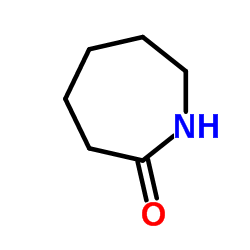


 CAS#:2432-74-8
CAS#:2432-74-8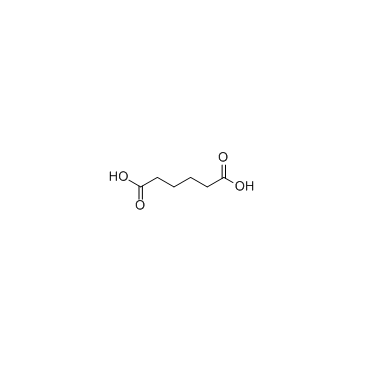 CAS#:124-04-9
CAS#:124-04-9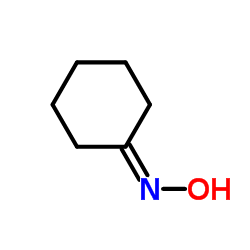 CAS#:100-64-1
CAS#:100-64-1 CAS#:108-94-1
CAS#:108-94-1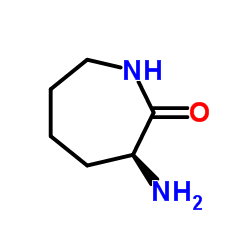 CAS#:21568-87-6
CAS#:21568-87-6 CAS#:5867-86-7
CAS#:5867-86-7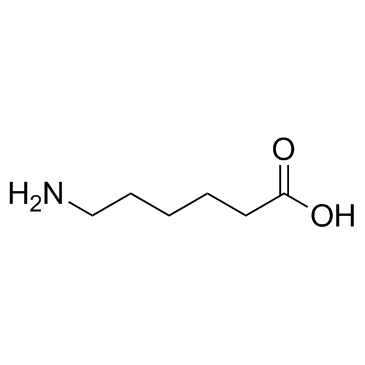 CAS#:60-32-2
CAS#:60-32-2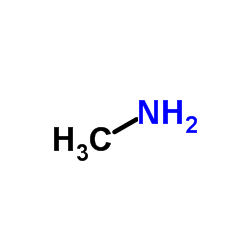 CAS#:74-89-5
CAS#:74-89-5 CAS#:613688-06-5
CAS#:613688-06-5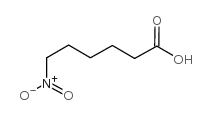 CAS#:10269-96-2
CAS#:10269-96-2 CAS#:112176-22-4
CAS#:112176-22-4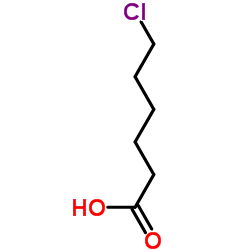 CAS#:4224-62-8
CAS#:4224-62-8 CAS#:10581-31-4
CAS#:10581-31-4 CAS#:106412-36-6
CAS#:106412-36-6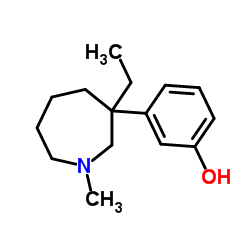 CAS#:54340-58-8
CAS#:54340-58-8 CAS#:4224-70-8
CAS#:4224-70-8 CAS#:371-34-6
CAS#:371-34-6 CAS#:3466-82-8
CAS#:3466-82-8
